Students graduating from a university not uncommonly leave and seek employment elsewhere, but by the excellence of their work attain great fame and as such repay their alma mater for their early education. This was the case of Antonio Scarpa. Entering the University of Padua at age fifteen, he studied under the famous Battista Morgagni and became his personal assistant, graduating in 1770 at eighteen, and thereafter worked for two years on a treatise on the structure and function of the inner ear. In 1772 he left Padua and for ten years was professor of anatomy and theoretical surgery in Modena, where he oversaw the construction of an anatomical institute. In 1781 the Duke of Modena, trying to improve medical education, sent him to France and England to visit several hospitals. Working with several prominent French and English surgeons, Scarpa performed many autopsies and attended the lectures of celebrities such as John and William Hunter, and Percival Pott.
In 1783 the Emperor Joseph II summoned Scarpa to Pavia, where he stayed for the rest of his life as chair and professor of anatomy and head of the surgical clinic. There, he ordered a new anatomical theatre deemed to have been an architectural jewel. Dismissed at one time from his position for his political views, he was reinstated in 1805 by Napoleon, then ruler of Italy. Through his careful dissections Scarpa made many observations and discoveries, some memorialized as Scarpa’s fascia, fluid, sheath, triangle, foramen, ganglion, membrane, and other eponymously named structures. He made contributions to the anatomy of the nervous system, describing the nasopalatine nerve as well as the structure of the inner ear. He has been called the father of Italian ophthalmology. He worked on hernias and described the sliding hernia where the appendix and part of the bowel descend into the hernial sac. In his drawings he illustrated the innervation of the heart. He worked on aneurysms, on the growth and cellular structure of bone, and attempted to carry out blood transfusions. He was a skilled general surgeon as well as proficient in eye, ear, and orthopedic surgery. An effective writer and teacher, Scarpa was an ingenious investigator whose books and illustrations remain classics to this day.
Antonio Scarpa was awarded many honors during his life. At the University he achieved a powerful position, controlling nearly every aspect of the faculty’s life and is said to have behaved in an arrogant and despotic manner, as well as amassing a large fortune. He was so disliked that after his death in 1832 (from a urinary infection caused by a kidney stone) some of the marble statues erected in his memory were defaced. His assistant exhumed his body and performed an autopsy removing his thumb, index finger, and urinary tract, which with his severed head were preserved in formaldehyde and remain on display in the anatomy museum of the University of Pavia.
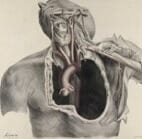
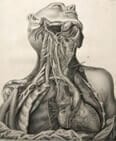

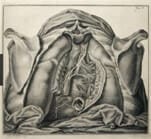
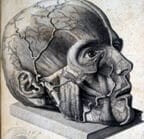

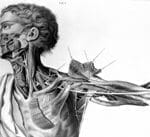

Leave a Reply